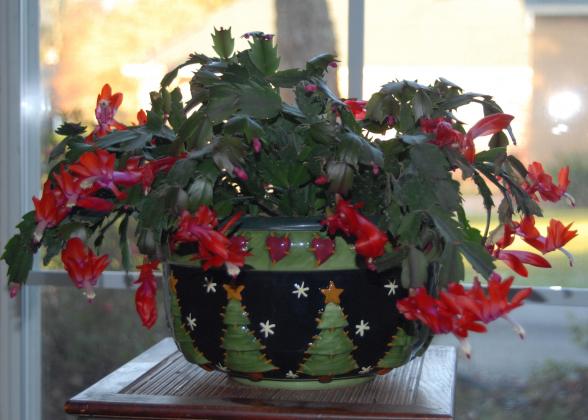
By Dan Gill
LSU AgCenter
Horticulturist
As the Earth travels around the sun in its orbit, the length of our days and nights vary from season to season. This is because Earth’s axis of rotation is tilted with respect to its plane of orbit around the sun.
Here in the northern hemisphere, we are tilted farthest away from the sun on the winter solstice. On that day, the period between sunrise and sunset is shorter than any other day during the year, and it is our longest night or period of darkness during the year. The winter solstice this year will occur on Dec. 21. It marks the beginning of winter.
It also marks a turning point. Since the summer solstice on June 21 (the longest day of the year), the days have been getting shorter and shorter and the nights longer and longer.
After the winter solstice, the days will begin to get longer and the nights shorter. From ancient times until today, human cultures in the northern hemisphere have marked this time of year with various celebrations, festivals and religious rituals.
What does this have to do with gardening? Well, I could mention that for thousands of years plants have played a role in human observances of this event. In Europe, plants that stay green during the winter often had special significance. They were a reminder of life in the midst of leafless, dormant trees and shrubs and freezing cold.
Evergreen plants such as holly, English ivy and mistletoe and conifers such as fir, spruce, cedar and pine are still used today to decorate our homes. And we now also include plants that bloom this time of year.
They remind us in the depths of winter that life will continue and spring will come again. Blooming poinsettias and Christmas cactus plants can be seen everywhere.
My focus, however, is the effects the changing lengths of days and nights from season to season have on plants. Why? Because gardeners need to understand that changing day and night lengths from season to season have an effect on the way many of our plants grow and what they do throughout the year.
Just like us, plants living in climates where major temperature changes occur and cold winters are typical need to be able to tell when the seasons are changing. Plants do this two ways: by reacting to the hours of darkness that occur in a 24-hour period and how much cold they have experienced.
The fact that the length of light and darkness in a 24-hour period has an effect on plants was researched thoroughly back in the 1900s, and the term “photoperiodism” was created to describe the phenomenon. (Animals, such as certain birds, insects and mammals, also respond to changing photoperiods during the year.)
The discovery of photoperiodism happened in 1920 when two employees of the U.S. Department of Agriculture discovered a genetic mutation in tobacco.
Plants possessing the mutant gene bloomed in December instead of flowering in summer as normal tobacco plants do. Experimenting with artificial lighting in winter and artificial darkening in summer, they found that the mutant plants would only flower when exposed to the long nights that naturally occur in winter. They called them “short-day” plants.
Once this behavior was discovered, photoperiodism was found to take place in many kinds of plants.
Other short-day plants include chrysanthemum, poinsettia, Christmas cactus and kalanchoe. That is why these plants bloom in fall and winter. Some plants, such as spinach, parsley and radish, flower only after exposure to long days and short nights of summer, and so they are called long-day plants. Still others, including many annuals and vegetables, are day neutral; flowering is not regulated by photoperiod.
As it turns out, it is not how long or short the period of light is, it’s the length of darkness in a 24-hour period. Photoperiodic plants need a sufficiently short or long period of darkness — not light — to develop a response. But we still use the terms short-day and long-day plant.
Plants don’t just measure the length of night to determine when to bloom. It plays a large role in some plants’ ability to anticipate the coming of the winter and respond. It is why, for instance, shade trees drop leaves in mid- to late November even though the weather is generally still mild.
Because the nights are getting longer, they know winter is on the way.
What mediates this remarkable response are various pigments, called phytochromes, which allow photoperiodic plants to measure how many hours of dark they receive. The phytochromes, in turn, can trigger the release of various hormones or growth factors that may cause the plant to bloom or drop its leaves or begin forming a bulb.
How do plants know when spring is arriving? Some can perceive the shortening of the nights. Many others are able to measure the amount of cold that has occurred, and when a sufficient number of chilling hours accumulate, they are triggered to bloom or send out new growth.
The winter solstice reminds us how remarkable plants are. They have abilities to sense the world around them and respond to it in ways that many gardeners are unaware of.
Just as we have used the Earth’s movement around the sun to develop calendars that allow us to determine the seasons, many plants can also determine the time of year based on similar perceptions.
